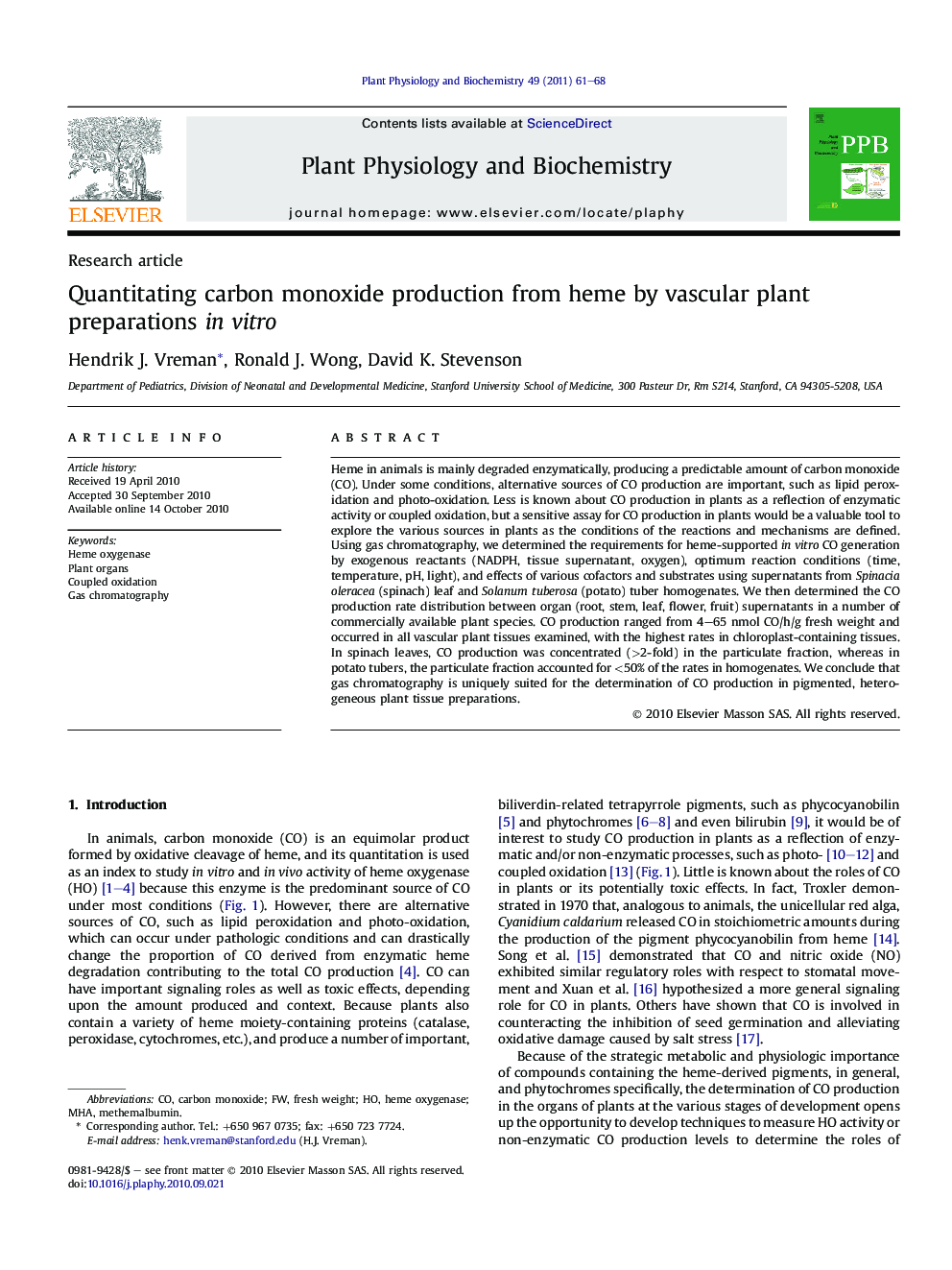| Article ID | Journal | Published Year | Pages | File Type |
|---|---|---|---|---|
| 2016358 | Plant Physiology and Biochemistry | 2011 | 8 Pages |
Heme in animals is mainly degraded enzymatically, producing a predictable amount of carbon monoxide (CO). Under some conditions, alternative sources of CO production are important, such as lipid peroxidation and photo-oxidation. Less is known about CO production in plants as a reflection of enzymatic activity or coupled oxidation, but a sensitive assay for CO production in plants would be a valuable tool to explore the various sources in plants as the conditions of the reactions and mechanisms are defined. Using gas chromatography, we determined the requirements for heme-supported in vitro CO generation by exogenous reactants (NADPH, tissue supernatant, oxygen), optimum reaction conditions (time, temperature, pH, light), and effects of various cofactors and substrates using supernatants from Spinacia oleracea (spinach) leaf and Solanum tuberosa (potato) tuber homogenates. We then determined the CO production rate distribution between organ (root, stem, leaf, flower, fruit) supernatants in a number of commercially available plant species. CO production ranged from 4–65 nmol CO/h/g fresh weight and occurred in all vascular plant tissues examined, with the highest rates in chloroplast-containing tissues. In spinach leaves, CO production was concentrated (>2-fold) in the particulate fraction, whereas in potato tubers, the particulate fraction accounted for <50% of the rates in homogenates. We conclude that gas chromatography is uniquely suited for the determination of CO production in pigmented, heterogeneous plant tissue preparations.
Research highlights►Carbon monoxide (CO) is produced by plant preparations in vitro. ►The green, chloroplast-containing, organs have the highest rate. ►Gas chromatography with Reduction Gas Detection is a sensitive and reproducible technique. ►A sensitive, high throughput assay was developed for quantitating CO production by plant materials and exogenous heme and NADPH in vitro.
